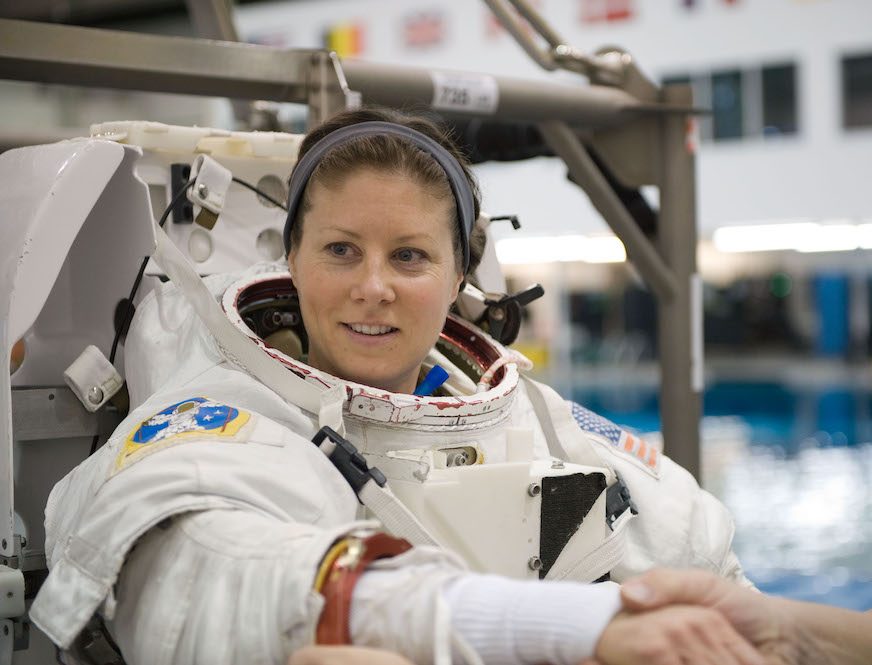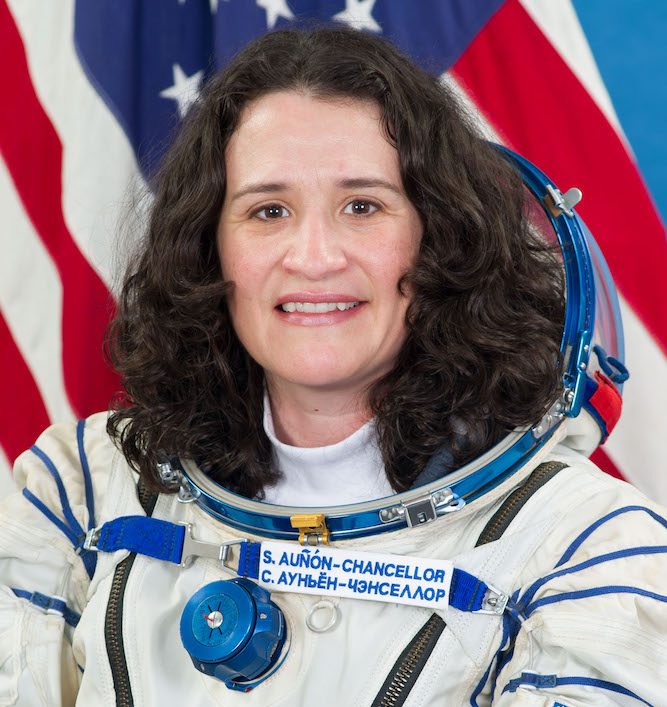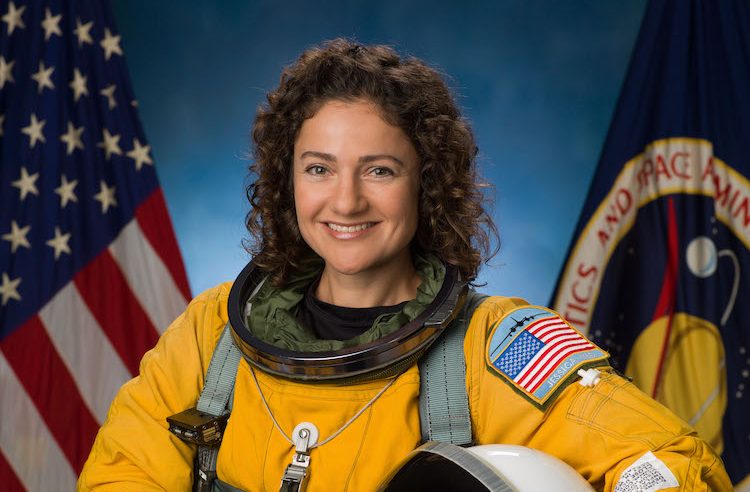NASA astronauts go above and beyond, in more ways than one. To even qualify for the NASA program, it takes a bachelor’s degree in a science – or math-related field and either three years’ work experience in that field or 1,000 hours of piloting. While that in itself is a big achievement, most astronauts pursue more education, more research and more experience before they are chosen as a NASA trainee, where they will face rigorous mental and physical training. To be a woman in the male-dominated NASA astronaut program is to add adversity to an already daunting endeavor, but the 12 women in the current NASA Astronaut Corps take it in a stride.
NASA needs the grit and intelligence of these women for its next phase of discovery. As part of the Artemis program, NASA will choose one man and one woman from the current corps to explore and research the Moon as a steppingstone to putting humans on Mars. The first woman on the Moon – ever – will be one of these 12 astronauts.
Nasa’s 16th class: since 1996
Stephanie Wilson
Skilled engineer Stephanie Wilson is the second African American woman to ever go to space. Her 42 days – accumulated over the course of three missions – are the longest any African American has ever been in space. In these missions, Wilson operated robotics and performed maintenance and repairs on the International Space Station (ISS). At the end of her most recent mission, Wilson robotically transferred “Leonardo,” a vessel for equipment and experiment results, from the ISS to the shuttle to bring home to Earth.

Nasa’s 17th class: since 1998
Dr. Tracy Caldwell Dyson

Dr. Tracy Caldwell Dyson grew up learning about how wiring and circuits work, as her father was an electrician. After working as an electrician in her father’s company through her undergraduate years studying chemistry at California State University, Caldwell Dyson received a PhD in chemistry from the University of California. Caldwell Dyson’s mastery of chemistry and electricity enabled her to operate the Endeavor’s flight deck and robot arm on her second spaceflight as Mission Specialist #1. On her next spaceflight, Caldwell Dyson spent over 22 hours in spacewalk – that is, in space outside the space station or shuttle – repairing a malfunctioning pump on the station.
Capt. Sunita Williams
Before coming to NASA, Sunita Williams was a Captain in the U.S. Navy, where she flew more than 30 different types of aircraft and aided in Operations Desert Shield and Provide Comfort, among others. In space, Williams is a record-breaker: she broke the women’s world record for longest spacewalk for the first time in 2006 with a cumulative 29 hours in spacewalk, then again in 2012 with 50 hours’ worth of spacewalks in one mission. Both these records were broken by now-retired Peggy Whitson, but Williams’s other record is hard to beat. With the aid of a special space station treadmill, she ran the Boston Marathon in real-time and became the first person to run a marathon in space. Williams is about to add to her 321 days in space a as a crew member of the Boeing Starliner’s first non-test crewed flight this December.

Nasa’s 18th class: since 2000

Dr. Megan McArthur
Growing up in Hawaii and California gave Dr. Megan McArthur an appreciation for the Pacific that led her to a PhD in oceanography. As Chief Scientist for the Scripps Institute of Oceanography, McArthur directed research and technology, including collection of specimens and other data at sea. In 2009, instead of out to sea she journeyed out to space as robotics crew member on a mission to service the Hubble Space Telescope. It was the last mission to the Hubble, and McArthur was the last person to touch it.
Nasa’s 19th class: since 2004
Shannon Walker
An expert in physics, Shannon Walker helped design and construct the robotics for the International Space Station in the late 1990s. Later, Walker got to see her robotics in action when she traveled to the ISS in 2010. As Flight Engineer 1 of the mission, Walker worked with over 130 experiments in human research, biology, material science and technology. On that same mission, Walker operated robotics that assisted astronauts in replacing a pump on the ISS.

Nasa’s 20th class: since 2009

Dr. Serena Auñón-Chancellor
With degrees in both engineering and medicine, Dr. Serena Auñón-Chancellor served as both a flight engineer and a biologist when she went to space in 2018. Aboard the ISS for 197 days, Auñón-Chancellor researched algae growth and cancer treatments. Now, she performs medicine via coms for the ISS and Commercial Crew Branch. Outside of NASA, Auñón-Chancellor offers medical care to the disadvantaged.
Dr. Kathleen Rubins
As a doctor of cancer biology, Dr. Rubins was well-equipped to be the first person to sequence DNA in space. She not only sequenced more than two-billion DNA base pairs – the chemical structures in our genes that determine our physical characteristics – but also grew heart cells, copied DNA and experimented with the genetic material of microbes, all during her 115 days in orbit around the Earth.


Dr. Jeanette Epps
With a PhD in aerospace engineering, seven years in the CIA and extensive experience in cave and underwater exploration – including a passion for scuba diving – Dr. Jeanette J. Epps is currently working as on-ground communication support for the International Space Station. She has not yet been to space, but when she does, she will be the first African American to be a crew member on the ISS.
Nasa’s 21st class: since 2013
Dr. Jessica Meir
In addition to a degree in space studies, Meir researched deep-diving emperor penguins and high-flying geese for her doctoral and post-doctoral work, so it’s safe to say she has always been an explorer of the faraway. Meir has been in space aboard the ISS since this past October. In fact, she and Christina Koch made history on Oct. 18, 2019 when the two women took the first-ever all-female spacewalk.


Christina Koch
When she was a child, Christina H. Koch dreamed of going to space. After attaining degrees in electrical engineering and physics and undergoing the rigorous NASA astronaut training, Koch is blowing her childhood dream out of the water. She saw space for the first time in March of 2019 when she served on the crew of an ISS maintenance mission. During this mission, Koch and Meir made the aforementioned all-female spacewalk. Koch spent 328 days in space – the longest spaceflight in history to be completed by a woman.
LtCol. Anne McClain
LtCol. Anne McClain uses her nickname, “Annimal,” as her call name for radio communications, and it’s fitting: McClain is a fitness beast who loves running, weightlifting, rugby and more. Beyond the gym, it takes the strength and energy of an “Annimal” for one person to earn degrees in engineering and international relations, fly as a Senior Army Aviator and serve as Flight Engineer for 204 days in space, all as the world’s first LGBTQ+ astronaut.


LtCol. Nicole A. Mann
An engineer and a Lieutenant Colonel in the U.S. Marine Corps, Nicole A. Mann has vast experience flying dozens of different types of aircraft in test flights and combat missions. In NASA, Mann has led training and development of systems including the Orion Spacecraft. She is currently training for a different kind of flight: the first crewed spaceflight test of the Boeing Starliner, scheduled for mid-2020.

Heather Motro
In addition to writing and serving as Assistant Managing Editor for Space Coast Magazines, Heather Motro writes the sustainability blog The Blergh, manages social media for the Marine Resources Council and was co-Editor-in-Chief of Holy Trinity High School’s award-winning yearbook, The Tigrium. She is a member of Clemson University Honors College Class of ’24 (go Tigers!).




